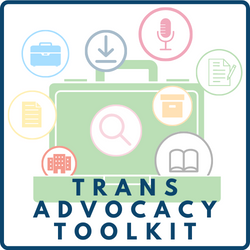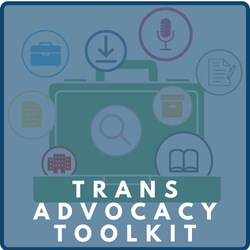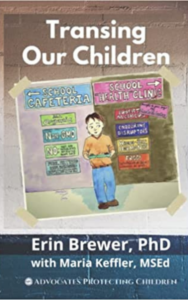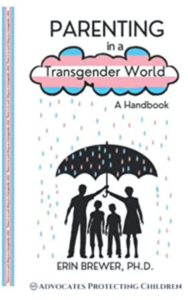UNDERSTANDING TRANSGENDER ISSUES
Resources by Topic
PUBERTY BLOCKERS | CROSS-SEX HORMONES | SURGERY | CONSENT | POTENTIAL CAUSES | ROGD | SUICIDE | SOCIAL TRANSITION | MEDICAL TRANSITION | SOCIAL CONTAGION | PARENTAL RIGHTS | POLICIES | EXPERIMENTATION | LEGISLATION | SOGI | WOMEN’S SPORTS | PUBLIC ACCOMMODATIONS | BIRTH CERTIFICATES | INTERSEX/DSD | COMPELLED SPEECH | AFFIRMATION | GENDER DYSPHORIA | DESISTERS/DETRANSITIONERS | THERAPY BANS
Therapy Bans
Books
Videos
Organizations
Research
A Follow-Up Study of Boys With Gender Identity Disorder
This study reports follow-up data on the largest sample to date of boys clinic-referred for gender dysphoria (n = 139) with regard to gender identity and sexual orientation.
One Size Does Not Fit All: In Support of Psychotherapy for Gender Dysphoria
We agree with Turban et al.’s (2020) position that therapies using coercive tactics to force a change in gender identity have no place in health care. We do, however, take issue with their problematic analysis and their flawed conclusions, which they use to justify the misguided notion that anything other than “affirmative” psychotherapy for gender dysphoria (GD) is harmful and should be banned.
This study attempts, for the first time, to isolate and examine the question of current psychosocial harm for former SOCE participants among sexual minorities in representative population data.
Perspectives were gathered of 50 Mormon individuals who had undergone counseling to change their sexual orientation. The data were analyzed using the constant comparative method and participant verification, thereby developing a grounded theory. A model emerged that depicted participants’ intrapersonal and interpersonal motivations for seeking conversion or “reparative” therapy, their perceived benefits and harms of such interventions, and the factors that facilitated self-acceptance and consolidation of a positive self-identity. Based on these descriptions, this study provides the foundation for a broader-based treatment approach (besides one focused solely on changing sexual orientation or adopting a lesbian, gay, or bisexual identity), which is designed to produce individualized congruent solutions for religiously conflicted, same-sex-attracted clients.
A longitudinal study of attempted religiously mediated sexual orientation change.
Evidence from the study suggested that change of homosexual orientation appears possible for some and that psychological distress did not increase on average as a result of the involvement in the change process. The authors explore methodological limitations circumscribing generalizability of the findings and alternative explanations of the findings, such as sexual identity change or adjustment.
Sexual Orientation Change Efforts (SOCE) *Reduce* Suicide: Correcting A False Research Narrative
Experiencing SOCE therapy does not encourage higher suicidality, as they claim; rather, experiencing higher suicidality appears to encourage recourse to SOCE, which in turn strongly reduces suicidality, particularly initial suicide attempts.
Polyamory, monoamory, and sexual fluidity: A longitudinal study of identity and sexual trajectories.
Prior research has documented shifts in sexual orientation identity, attractions, and partnering behavior over time and social context, commonly referred to as sexual fluidity (Diamond, 2008). Social contextual factors may include relationship status and type of relationship, and these may be particularly salient in polyamorous communities where multiple relationships and some degree of fluidity are common.
Sexual Orientation Change Efforts, Adverse Childhood Experiences, and Suicidality
Our interest is not to defend genuinely unethical practices but, rather, to promote scientific integrity in a domain of research that is subject to immense professional and political pressure to support specific legislative and policy aims.5 In our view, the Blosnich et al. study, as with most research in this literature, offers conclusions in support of expansive and imprecisely defined SOCE bans that run ahead of what methodological limitations allow
Sexual Minorities who Reject an LGB Identity: Who Are They and Why Does It Matter?
Results suggested those who reject an LGB identity are more likely to be religiously active, full members of their church, and highly intrinsic and theologically conservative in their religious viewpoint. They further reported having slightly more lifetime heterosexual attractions, fantasies, and behaviors; greater internalized homonegativity; and being more interested in having children and a child-centered family life. They were also more likely to be single and celibate or in a heterosexual relationship. Contrary to expectations, these differences were not associated with health differences in depression, anxiety, and social flourishing.
The critical gaze of Temple Newhook et al. examined three primary issues: (1) the terms persistence and desistance in their own right; (2) methodology of the follow-up studies and interpretation of the data; and (3) ethical matters. In this response, I interrogate the critique of Temple Newhook et al. (2018).
Increasing numbers of adolescents present in adolescent gender identity services, desiring sex reassignment (SR). The aim of this study is to describe the adolescent applicants for legal and medical sex reassignment during the first two years of adolescent gender identity team in Finland, in terms of sociodemographic, psychiatric and gender identity related factors and adolescent development.
Our results suggest the need to bring into play a biopsychosocial, trauma-informed model of mental health care for children presenting with gender dysphoria. Ongoing therapeutic work needs to address unresolved trauma and loss, the maintenance of subjective well-being, and the development of the self.
Transgender medicalization and the attempt to evade psychological distress
The author argues that the quality of evidence supporting the biomedical approach is extremely poor. This puts young trans people at risk of receiving potentially damaging medical treatment they may later seek to reverse or come to regret, while their underlying psychological issues remain unaddressed.
Reflections on the Clinician’s Role with Individuals Who Self-identify as Transgender
Gender identity is only one aspect of an individual’s multifaceted identity. The contributions to the passionate positions in the trans culture debate are discussed along with the controversy over the official
Impact of trauma on sexual functioning and sexual relationships
This paper considers the impact of traumatic experiences on sexual functioning and sexual relationships. There is a large literature on the way sexual trauma affects later sexual functioning and relationships. Non-sexual traumatic experiences also affect these domains.
Efficacy and risk of sexual orientation change efforts: a retrospective analysis of 125 exposed men
SOCE was perceived as an effective and safe therapeutic practice by this sample of participants. We close by offering a unifying understanding of discrepant findings within this literature and caution against broad generalizations of our results.
Effects of Therapy on Religious Men Who Have Unwanted Same-Sex Attraction
In our study, most of those who participated in group or professional help had heterosexual shifts in sexual attraction, sexual identity and behavior with large statistical effect sizes, similarly moderate-to-marked decreases in suicidality, depression, substance abuse, and increases in social functioning and self-esteem. Almost all harmful effects were none too slight.
Sexual Fluidity in Male and Females
These studies also provide evidence for gender differences in sexual fluidity, but the extent and cause of these gender differences remain unclear and are an important topic for future research.
In what follows, I will briefly describe the history of SB 1172 and analyze some of the likely factors that led to the pursuit of a statutory solution to a professional practice concern. I will also outline several recommendations for improving how controversial issues are addressed, not only by the profession of psychology, but also by politicians and judges. By examining these concerns through the lens of SB 1172, I hope to highlight the perils of resolving matters of professional practice through legislative action.
Homosexuality and Co-Morbidities: Research and Therapeutic Implications
People reporting SSA have a more widespread and intense psychopathological burden than probably any other group of comparable size in society, though college-age people may have more substance abuse problems. The reversed gender pattern of these conditions suggests some link with SSA itself. Surveys in recent literature suggest that perceived discrimination rather than objective discrimination is to blame for suicidality. Recent literature also finds that particular emotion/avoidant-based coping mechanisms used by people reporting SSA almost entirely account for the effects of this perceived discrimination.
Professional care for unwanted same-sex attraction: What does the research say?
In recent years, national and international medical and mental-health associations typically have emphasized the potential harmfulness of professional care for unwanted same-sex attraction (SSA or homosexuality) and behavior. State legislatures in the US and legislative bodies in other countries either have passed or are considering passing laws which would penalize professionals who provide professional care for unwanted SSA—to minors and/or adults—including the loss of the license to practice. This paper was written as a response to the present situation in the UK.
This article analyzes the impact of religion on reported levels of subjective well-being (general happiness) among lesbian, gay, bisexual, and transgender (LGBT) adults. Although previous studies find religious affiliation to be a significant predictor of subjective well-being among the general population in the United States, limited quantitative research investigates general happiness among sexual and gender minorities. This study augments the existing literature by using a national survey of LGBT adults conducted by the Pew Research Center in 2013. The results show that religious affiliation is a significant predictor of LGBT individuals’ happiness. LGBT individuals who identify as Catholic, agnostic or atheist, or with no particular religious affiliation report lower levels of happiness compared to mainline Protestants. Surprisingly, no significant differences are found between mainline Protestants (whose church doctrine often accepts same-sex relations) and evangelical Protestants (whose church doctrine often condemns same-sex relations). In addition, income is the only control variable that affects general happiness. Our analysis reveals interesting differences in the determinants of subjective well-being between the LGBT and general population. (PsycINFO Database Record (c) 2017 APA, all rights reserved)
Some classes represent generally consistent indicators across dimensions over time, while other classes describe more emerging or discontinuous trajectories. Substantial changes were common not only from late adolescence to the early 20s but also from the early 20s to the late 20s, indicating that sexual orientation development continues throughout emerging adulthood.
Is Conservative Religiousness Inherently Associated with Poorer Health for Sexual Minorities?
Results of path analysis involving sexual minority participants (N = 1317) from diverse sociopolitical contexts revealed health outcomes to be associated with internalized homonegativity and the resolution of conflict between religious and sexual minority identities. Contrary to expectations, several markers of religiousness were not directly associated with either improved or worsened health outcomes for depression or anxiety. However, religious activity moderated the influence of internalized homonegativity (IH) on depression such that IH was less strongly related to depression among individuals who frequently attended religious services than among individuals who infrequently attended religious services. These findings have special salience for advancing a more accurate understanding of conservatively religious sexual minorities and directing culturally sensitive research, clinical services, and public policy.
In this brief comment on Hyde, Bigler, Joel, Tate, and van Anders (2019), we maintain that sex and gender are distinct variables that impact human health in critical ways both individually and interactively.
The literature germane to the care of clients presenting for psychotherapy with conflicts between their sexual orientation and religious values typically addresses the topic from within a particular therapeutic approach. This article addresses the issue from a broader perspective that takes into account 3 different paradigms: gay-affirmative therapy, sexual identity therapy, and change-oriented therapy. The authors describe the 3 approaches, compare and contrast them across several different key dimensions of theory and practice, and identify some strengths and potential limitations of each approach for assisting clients who are attempting to navigate the resolution of their conflict.
Same-Sex Marriage and the Boundaries of Diversity: Will Marriage and Family
I conclude with some recommendations through which the field of marriage and family therapy can reduce the potential for conflicts and thereby reassure these clinicians that they continue to be welcomed even if their vision of marriage differs from that which is formally endorsed by their professional associations.
Satisfaction and Health Within Four Sexual Identity Relationship Options
The SSR group had the least depression and anxiety and the most life satisfaction and physical health, followed by the MOR group, followed by the two single groups. Results from a stepwise regression predicting satisfaction from important aspects of life and relationships identified that meeting needs for connection, intimacy, and mutual understanding was the strongest predictor of satisfaction across all options. Other significant variables included participant-defined authentic sexual expression, resolving conflicts with religion, and reducing depression and anxiety. Results may inform SSA/LGB individuals who are questioning which option fits best for them and help guide therapists who work with these individuals.
Traditional religious belief, identity, and activity were associated with rating some goals of SOCE as at least mildly helpful. Effect sizes were mostly moderate to large for these statistics. There was a heightened level of depression and anxiety among these sexual minorities overall, but past pursuit of change-oriented goals did not appear to be a major explanation for current levels of distress. We conclude by outlining some implications and cautions based on our findings for both proponents and opponents of change-oriented psychotherapy approaches.
Sexual Minorities who Reject an LGB Identity: Who Are They and Why Does It Matter?
Although many sexual minorities adopt a lesbian, gay, bisexual (LGB) identity, some persons who experience same-sex attractions reject an LGB identity in favor of other descriptions for their sexuality, such as “same-sex attracted” or “mostly heterosex- ual” (Lefevor et al., 2020). Because research typically focuses on LGB-identified individ- uals, very little is known about those who reject an LGB identity. In this study, we seek to identify characteristics of this group and how these characteristics may distinguish them from sexual minorities who are LGB-identified. We also examine to what extent these groups differ on several health measures and close with a discussion about why our findings matter for this literature.
Sexual Attraction Fluidity and Well-Being in Men: A Therapeutic Outcome Study
ecent legislative efforts initiated by politicians and activists have limited or threatened to limit the autonomy and self-determination of individuals desiring sexual attraction fluidity exploration in therapy (SAFE-T), claiming that SAFE-T is ineffective and harmful. The American Psychological Association has claimed that there is not enough rigorous research to draw conclusions about the efficacy or beneficence and nonmaleficence of SAFE-T. The present longitudinal study examined the sexual attraction fluidity (SAF) and wellbeing of psychotherapy clients while participating in SAFE-T. Participants were 75 adult male psychotherapy clients reporting both same-sex attraction experiences (SSAE) and the desire to participate in SAFE-T to achieve SAF. Well-being was measured with the OQ-45.2, SSAE, and opposite-sex attraction experiences (OSAE) with a Likert scale, and sexual attraction identity (SAI) with a Likert-type item. Results of t-tests of the means of baseline and final well-being measures revealed a clinically and statistically significant improvement in well-being. A linear mixed model was used to analyze the SSAE, OSAE, and SAI data obtained at baseline, 6 months, 12 months, 18 months, and 24 months, with results showing statistically significant fluidity of all three factors. SSAE decreased, OSAE increased, and SAI moved toward heterosexual identity.
Aricles
Letter Templates
National Task Force for Therapy Equality
Letter to oppose therapy bans.
Letter from American College of Pediatricians
Letter to oppose therapy bans.
Template therapy ban letter to legislators
Letter to oppose therapy bans.
Serious Harmful Implications of Therapy Ban Bills
Letter to oppose therapy bans.

















